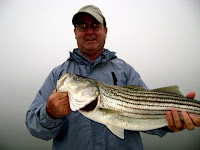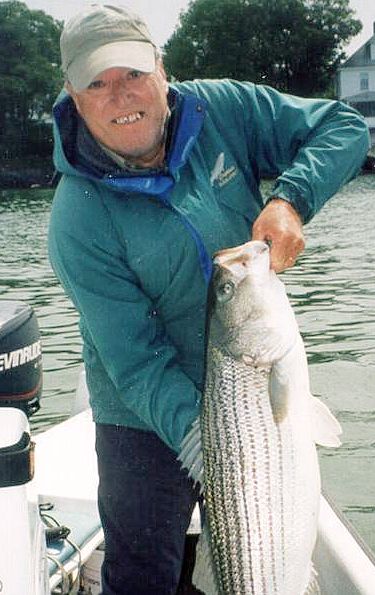
There's a noted theory in fisheries science called "imprinting". Meaning that a school (genetic family) of fish will return to a given or several locations year after year to feed. One location can hold just one family of fish over the years. Their genetics being of one family. It is not unheard of for a family of fish to be 100% fished off a certain location to never see that family of fish again. This theory of "imprinting" could explain why certain "fishing holes" consistantley attract fish every year. With so many anglers fishing well known "fishing holes", we could be easily fishing down several striped bass "families" to the point of extinction. Other, smaller families can be found on lesser known "fishing holes" which might explain the variance of angler success along the coast. One angler may be having wonderful fishing while another is getting skunked because he is fishing the same old "fishing hole" that has been cleaned out of a "family" of fish that used to frequent the popular spot. My message here: find a new fishing hole to discover a new "family" of fish. Your fishing may improve, even locate a record size fish, either personal or for the books because you are fishing a lesser fishing location that hasn't had all the big girls removed from the "fishing hole" Striped bass fishing is not like it was 10 years ago. We still need to put some controls on excess mortality of striped bass by commercial and recreational anglers. There's still striped bass fishing to be had here in Maine. We as anglers just need to help improve the future fishery.
The photograph above is representative of what could happen when you fish lesser known fishing waters. This fish, most likely, would have been a new line class world record. It was taken using a 12 pound mono leader and estimated to weigh close to 50 pounds. We chose to release the fish and not stress it by taking too much time keeping it out of the water for weighing and doing all the necessary measurements required for a release record. This was the only fish caught in the obscure fishing location. Note the tiny fly this monster fish took. I believe it is was a size 6 hook.
Big decisions are mounting around the management of Maine's striped bass fishing. First, Maine needs a saltwater fishing license so that it's Department of Marine Resources will have funds to pursue recreational fishing issues in Maine Waters. Second, Maine needs to address new striped bass fishing regulations to reflect the need for decreased mortality of striped bass while they are in Maine. We are killing the wrong fish using the outdated slot limit. Personally, I would like to see the striped bass limit returned to one fish per day at 36 inches or larger. Management and license issues are something to discuss another time.
Merry Christmas to all.















